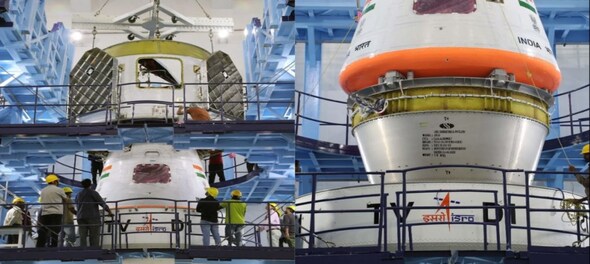
The Indian Space Research Organisation (ISRO) is set to conduct the first test flight of the Crew Escape System (CES) as part of the major step towards launch of India’s Gaganyaan mission. According to ISRO, the space agency will conduct the test for "flight demonstration and evaluation of Test Vehicle sub systems”. The key test is necessary for the validation of the system’s safety for astronauts during the space missions.
A test flight will be carried out on Saturday, October 21, at Satish Dhawan Space Centre in Sriharikota, Andhra Pradesh. It will involve a specially designed single-stage rocket, which will launch the Crew Escape System and the Crew Module simultaneously.
What happened when ISRO tested the Crew Escape System in 2018?
Although this test is getting a lot of attention, ISRO has not initiated a test to validate the Crew Escape System for the first time. ISRO’s commitment to space exploration and astronaut safety was demonstrated in 2018 by the first pad abort test for the Gaganyaan mission.
The main objective of the 2018 test was to demonstrate the efficacy of the Crew Escape System, one of the emergency measures that can quickly move the crew module and astronauts away from the launch vehicle in case of any unexpected development.
In 2018, the countdown for the test sequence spanned a period of five hours and led to the launch of the simulated CES and the crew module weighing 12.6 tonnes. The launch occurred precisely at 7 AM, when it took off from the Satish Dhawan Space Centre. In the air for 259 seconds, the Crew Escape System and crew module gently curved over the Bay of Bengal before it returned back to Earth via parachute support. The landing was successful at a place nearly 2.9 km away from Sriharikota.
During the 2018 test, the crew module attained an altitude of about 2.7 km, driven by seven carefully crafted quick-reacting solid motors. The specially-designed motors propelled the crew module away from the astronauts without exposing them to high g-force.
An array of roughly 300 sensors closely monitored the entire test flight, diligently recording various mission performance parameters. This involved deploying three recovery boats towards the retrieval of the crew module in compliance with the recovery protocol, a sure indication of ISRO’s comprehensive approach to space missions.
The success of this critical pad abort test is a major milestone and a step in the right direction towards ISRO’s ultimate goal of launching the iconic Gaganyaan mission.
(Edited by : Anshul)
Check out our in-depth Market Coverage, Business News & get real-time Stock Market Updates on CNBC-TV18. Also, Watch our channels CNBC-TV18, CNBC Awaaz and CNBC Bajar Live on-the-go!


'Rahul Gandhi deserted Amethi due to fear of Smriti Irani': How BJP plans to puncture Congress' UP plan
May 3, 2024 1:12 PM
'Don't be scared, don't run away', PM Modi tells Rahul for not contesting from Amethi
May 3, 2024 1:06 PM

